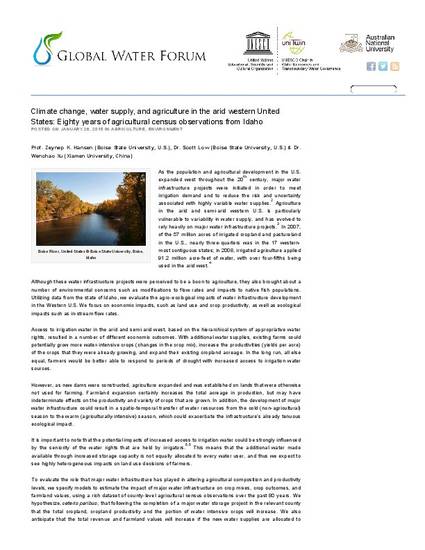
As the population and agricultural development in the U.S. expanded west throughout the 20th century, major water infrastructure projects were initiated in order to meet irrigation demand and to reduce the risk and uncertainty associated with highly variable water supplies.2 Agriculture in the arid and semi-arid western U.S. is particularly vulnerable to variability in water supply, and has evolved to rely heavily on major water infrastructure projects.3 In 2007, of the 57 million acres of irrigated cropland and pastureland in the U.S., nearly three-quarters was in the 17 western-most contiguous states; in 2008, irrigated agriculture applied 91.2 million acre-feet of water, with over four-fifths being used in the arid west.
This document was originally published by Australian National University (Global Water Forum) in Global Water Forum. This work is provided under a Creative Commons Attribution-NonCommercial-NoDerivs 3.0 License. Details regarding the use of this work can be found at: https://creativecommons.org/licenses/by-nc-nd/3.0/.
This document was originally published with the author name: Scott Low.
